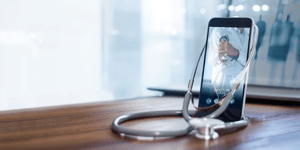The healthcare and medical communications industries evolve rapidly, with new achievements and issues arising everyday. That’s why it’s important that technology in medical education stays relevant, fresh and innovative. Especially when it comes to educating healthcare professionals (HCPs) on new topics or issues, technology is an accessible and trustworthy way for adult learners to engage with complex medical concepts. Here are a few of medical education technologies that we see emerging as frontrunners in enhancing medical communications for HCPs.
1. Interactive Patient Cases
One of the most impactful technologies transforming medical education is the integration of interactive patient cases into learning modules. These interactive cases simulate real-world patient scenarios, allowing healthcare professionals to apply theoretical knowledge to practical situations. The dynamic nature of the technology encourages critical thinking, decision-making, and problem-solving skills. An example of this technology is RxWise, which uses modernized graphics to present a patient case and a series of questions designed to test the user’s knowledge.
2. E-learning Modules
Electronic learning (e-learning) modules have become indispensable in medical education. Not only are they informative, but they’re also accessible and allow the user to learn at their own pace. E-learning modules offer many different types of education content, and can be developed or updated quickly, so they always remain relevant. Vivomap is an excellent example of an e-learning module platform, as it caters to diverse learning styles and allows users to earn credits.
3. Virtual and AI-Powered Patient Simulators
With the rise of artificial intelligence (AI) virtual patient simulators have become increasingly sophisticated. Similar to interactive patient cases, but much more complex, virtual patient simulators have been empowered by AI to adapt and challenge the user to make the clinical environment more difficult and realistic. These simulators, equipped with advanced technology, provide healthcare professionals with hands-on experiences in diagnosing and treating virtual patients that have an ability to interact or challenge the user. With the ability to replicate various scenarios and pathologies, these simulators offer a safe space for learners to hone their skills and build confidence before entering real clinical settings.
BONUS: Custom Digital Solutions
Sometimes, the technology you need for your medical communications project just doesn’t exist yet. That’s why CTC, as a top-rated medical communications agency, can create custom digital solutions depending on the challenge or issue. This might include an immersive virtual training environment, a custom e-learning platform or a specialized medical app. If a medical education technology that you need doesn’t quite fit your needs, a custom digital solution is the way to go.
By harnessing the power of these technologies, you'll be able to deliver impactful, engaging and effective learning experiences. If you want to learn more about medical communications or you want to stay up to date on the latest in the medcomms industry, sign up for CTC’s newsletter. Just for doing so, we’ll plant 10 trees on your behalf as part of our environmental protection efforts.






